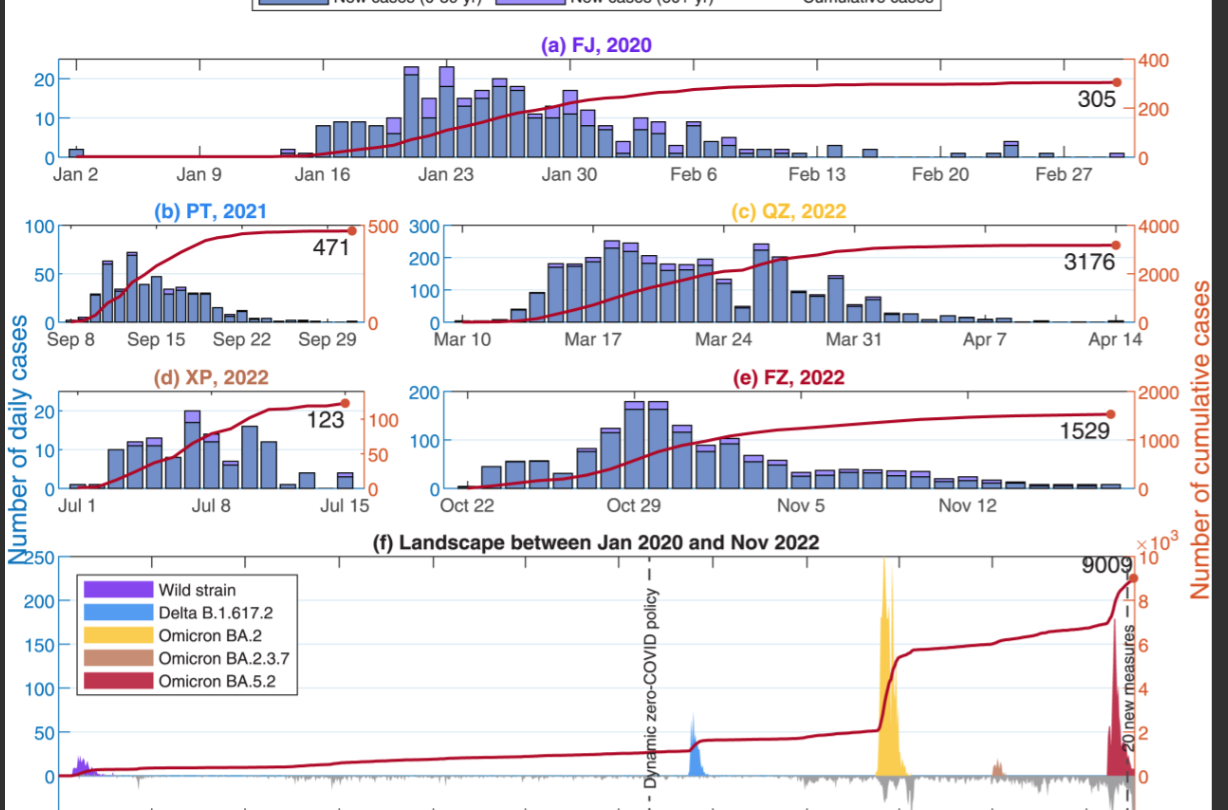By Fengying WeiI et al.
Source Journals
Abstract
The differences of SARS-CoV-2 variants brought the changes of transmission characteristics and clinical manifestations during the prevalence of COVID-19. In order to explore the evolution mechanisms of SARS-CoV-2 variants and the impacts of variant evolution, the classic SIR (Susceptible-Infected-Recovered) compartment model was modified to a generalized SVEIR (Susceptible-Vaccinated-Exposed-Infected-Recovered) compartment model with age-group and varying variants in this study. By using of the SVEIR model and least squares method, the optimal fittings against the surveillance data from Fujian Provincial Center for Disease Control and Prevention were performed for the five epidemics of Fujian Province. The main epidemiological characteristics such as basic reproduction number, effective reproduction number, sensitivity analysis, and cross-variant scenario investigations were extensively investigated during dynamic zero-COVID policy. The study results showed that the infectivities of the variants became fast from wild strain to the Delta variant, further to the Omicron variant. Meanwhile, the cross-variant investigations showed that the average incubation periods were shortened, and that the infection scales quickly enhanced. Further, the risk estimations with the new variants were performed without implements of the non-pharmaceutical interventions, based on the dominant variants XBB.1.9.1 and EG.5. The results of the risk estimations suggested that non-pharmaceutical interventions were necessary on the Chinese mainland for controlling severe infections and deaths, and also that the regular variant monitors were still workable against the aggressive variant evolution and the emergency of new transmission risks in the future.
Read more click here

